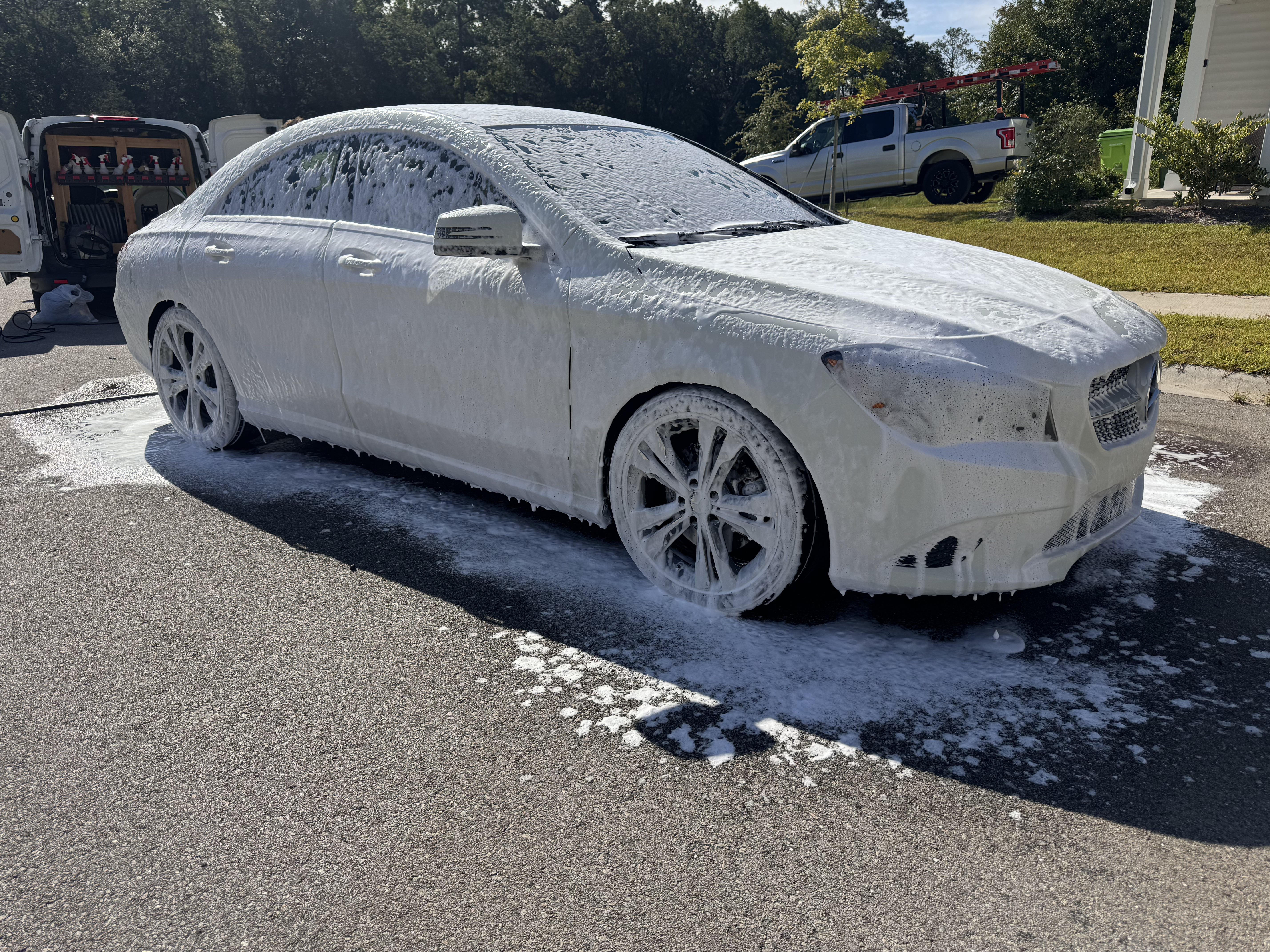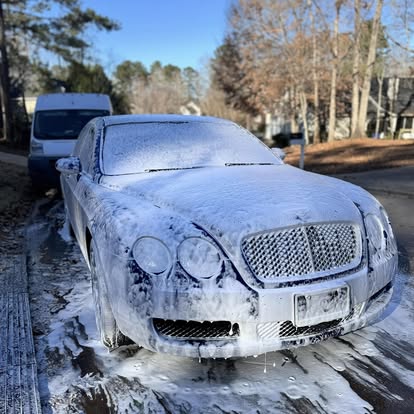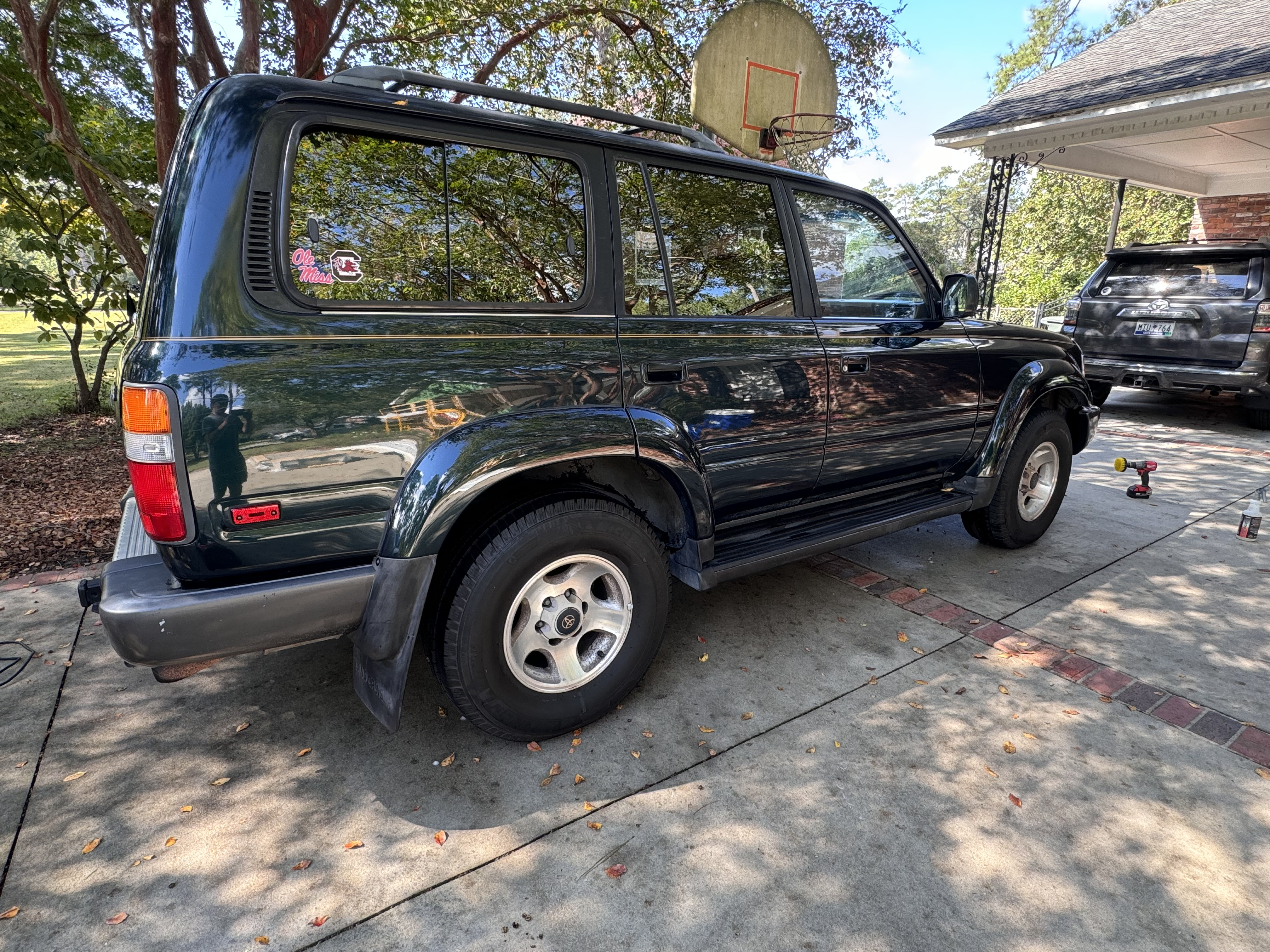Auto Ceramic Coating vs Paint Protection Film: Which is Better?
When it comes to protecting your vehicle's paint, two technologies dominate the conversation: ceramic coating and Paint Protection Film (PPF). Both offer exceptional protection, but they work in fundamentally different ways and serve slightly different purposes. If you're trying to decide between auto ceramic coating and PPF for your vehicle, understanding the key differences, benefits, and limitations of each is essential to making the right investment.
In this comprehensive comparison, we'll break down everything you need to know about ceramic coating versus paint protection film, helping you choose the perfect solution for your vehicle's protection needs and budget.
What is Auto Ceramic Coating?
Ceramic coating is a liquid polymer applied to your vehicle's exterior that chemically bonds with the factory paint, creating a permanent or semi-permanent protective layer. The coating is primarily composed of silicon dioxide (SiO2) derived from quartz, which forms an incredibly hard, transparent layer measuring just 2-5 microns thick.
How Ceramic Coating Works
When professional ceramic coating is applied to properly prepared paint, the nano-particles in the liquid solution fill in the microscopic peaks and valleys of your paint's surface. As the coating cures, it forms a molecular bond that becomes significantly harder than your factory clear coat—typically rating 9H on the pencil hardness scale.
This ultra-hard, hydrophobic (water-repelling) layer creates a sacrificial barrier between your paint and the environment. Contaminants like bird droppings, tree sap, bug splatter, and industrial fallout bond to the coating rather than your paint, where they can be safely removed during washing.
Key Benefits of Ceramic Coating
- Extreme hydrophobic properties causing water and dirt to bead and slide off
- Enhanced gloss and depth, creating a mirror-like finish
- Protection from UV rays, preventing paint oxidation and fading
- Chemical resistance against acidic contaminants
- Scratch resistance (not scratch-proof, but resistant to light scratching and swirls)
- Dramatically easier maintenance and cleaning
- Long-lasting protection (3-7+ years with proper care)
- Affordable compared to PPF
- Can be applied to all exterior surfaces including glass, wheels, and trim
What is Paint Protection Film (PPF)?
Paint Protection Film, also known as clear bra, is a thermoplastic urethane film physically applied to your vehicle's painted surfaces. Modern PPF is typically 6-8 mils thick (150-200 microns)—significantly thicker than ceramic coating—and provides a physical barrier between your paint and potential damage.
How PPF Works
PPF is precision-cut to fit specific panels of your vehicle using computerized patterns, then carefully applied using a slip solution. The film's adhesive bonds to your paint while the thick urethane layer absorbs impacts from road debris, preventing chips and scratches from reaching your paint.
High-quality PPF features self-healing properties, meaning light scratches and swirl marks in the film disappear when exposed to heat (from the sun or warm water). The film can be removed years later without damaging your original paint, making it truly reversible protection.
Key Benefits of Paint Protection Film
- Superior physical protection against rock chips, road debris, and deep scratches
- Self-healing properties eliminate light scratches and swirl marks
- Nearly invisible when professionally installed
- Protects against parking lot damage and minor impacts
- Preserves original paint in pristine condition
- Removable without paint damage
- Can be applied to high-impact areas only (partial coverage)
- Longevity of 7-10 years with proper care
- Excellent for maintaining resale value on luxury and exotic vehicles
Ceramic Coating vs PPF: Head-to-Head Comparison
Protection Level
Winner: PPF
PPF provides superior physical protection against rock chips, scratches, and impacts due to its thickness (6-8 mils vs. 2-5 microns). While ceramic coating offers excellent chemical resistance and prevents light scratching, PPF can absorb and heal more significant damage.
However, ceramic coating excels at protecting against environmental contaminants, UV damage, and chemical etching. The ideal scenario? Many professionals recommend combining both technologies for ultimate protection.
Appearance and Aesthetics
Winner: Ceramic Coating (Slight Edge)
Both technologies can produce stunning results. Ceramic coating enhances gloss and depth more dramatically than PPF alone, creating that coveted liquid, mirror-like finish. The coating amplifies your paint's natural characteristics, making colors pop and metallic flakes shimmer.
Modern PPF is virtually invisible when properly installed, but it doesn't enhance gloss like ceramic coating does. That said, many installers apply ceramic coating over PPF to combine the enhanced appearance of ceramic with the physical protection of film—truly the best of both worlds.
Hydrophobic Properties
Winner: Ceramic Coating
Ceramic coating's extreme hydrophobic properties are superior to standard PPF. Water, dirt, and contaminants bead up dramatically and slide off coated surfaces with minimal effort. This makes washing easier and helps your vehicle stay cleaner between washes.
Some premium PPF products now include hydrophobic top coats that mimic ceramic coating properties, but standalone ceramic coating still offers more pronounced water-repelling characteristics. Again, many choose ceramic coating over PPF for maximum hydrophobic performance.
Coverage and Versatility
Winner: Ceramic Coating
Ceramic coating can be applied to virtually any exterior surface on your vehicle: paint, glass, wheels, plastic trim, chrome, and even vinyl wraps. This versatility means you can protect your entire vehicle inside and out with a uniform layer of protection.
PPF is typically limited to painted surfaces and is often applied only to high-impact areas like front bumpers, hoods, fenders, mirrors, and door edges due to cost considerations. Full-body PPF installations are available but significantly more expensive.
Maintenance Requirements
Winner: Ceramic Coating
Ceramic coating requires minimal maintenance beyond regular washing with pH-neutral soaps and periodic application of ceramic boost sprays (every 3-6 months). The coating's hydrophobic properties make washing easier and less frequent.
PPF requires careful maintenance to prevent edge lifting, needs regular cleaning to prevent staining, and may require professional reconditioning to remove stubborn contaminants. Some PPF products can yellow over time if not properly maintained, though modern films have largely solved this issue.
Longevity
Winner: PPF (Slight Edge)
High-quality PPF typically lasts 7-10 years before requiring replacement, while professional ceramic coating lasts 3-7+ years depending on the product and maintenance. However, ceramic coating can be reapplied relatively easily and affordably, while PPF replacement requires complete removal and reinstallation.
Both technologies require proper maintenance to achieve their maximum lifespan. Neglected ceramic coating may last only 2-3 years, while poorly maintained PPF can yellow, crack, or peel prematurely.
Cost Comparison
Winner: Ceramic Coating
Ceramic coating is significantly more affordable than PPF:
Ceramic Coating Costs:
- Entry-level: $800-$1,200 (sedans)
- Mid-range: $1,200-$2,000 (SUVs/trucks)
- Premium: $2,000-$3,500+ (luxury vehicles, full coverage)
PPF Costs:
- Partial front-end coverage: $1,500-$2,500
- Full front coverage: $2,500-$4,000
- Full vehicle PPF: $5,000-$10,000+
For budget-conscious vehicle owners seeking excellent protection, ceramic coating delivers tremendous value. PPF makes more sense when physical impact protection is the primary concern or for high-value vehicles where maximum protection justifies the investment.
Which Option is Best for Your Vehicle?
Choose Ceramic Coating If:
- You want excellent protection at an affordable price point
- Enhanced gloss and appearance are important to you
- You desire protection for your entire vehicle including wheels and glass
- Your vehicle isn't frequently exposed to heavy road debris
- You prefer easier maintenance and cleaning
- You drive a daily driver or mid-range vehicle
- Chemical resistance and UV protection are priorities
Choose PPF If:
- Maximum physical protection is your top priority
- You drive a luxury, exotic, or high-value vehicle
- Your vehicle sees frequent highway driving with heavy road debris
- You want to preserve factory paint in completely original condition
- Self-healing properties appeal to you
- Budget allows for the higher investment
- You plan to keep the vehicle long-term
Choose BOTH If:
- You want ultimate protection and appearance
- You own a high-value vehicle worth maximum investment
- Budget allows for comprehensive protection
- You desire the physical protection of PPF with the easy maintenance and gloss of ceramic coating
- You're looking for the longest-lasting, most complete protection possible
The Ultimate Combination: PPF + Ceramic Coating
For enthusiasts and luxury vehicle owners seeking the absolute best protection, combining PPF with ceramic coating offers unparalleled results. This approach involves:
- Paint Correction: Paint is perfected to remove all defects
- PPF Installation: Film is applied to high-impact areas or the full vehicle
- Ceramic Coating: Coating is applied over the PPF and remaining painted surfaces
This combination delivers:
- Maximum physical impact protection from PPF
- Enhanced hydrophobic properties from ceramic coating
- Superior gloss and depth
- Easier maintenance of the PPF (contaminants don't bond as strongly)
- Extended PPF lifespan due to additional UV and chemical protection
- Uniform appearance across all surfaces
While this represents the highest investment ($6,000-$12,000+ for luxury vehicles), it provides comprehensive, long-lasting protection that maintains your vehicle in pristine condition for years.
Conclusion: Making the Right Choice for Your Vehicle
Both auto ceramic coating and paint protection film represent advanced technologies that dramatically outperform traditional protection methods like wax or sealants. Your choice ultimately depends on your specific needs, budget, and protection priorities.
For most vehicle owners, professional ceramic coating offers exceptional protection, stunning aesthetics, and excellent value. It's particularly ideal for daily drivers, newer vehicles, and owners who prioritize appearance enhancement alongside solid protection.
PPF is the clear winner when maximum physical protection is essential, especially for luxury vehicles, exotic cars, or vehicles seeing frequent highway use with heavy road debris exposure.
And for those who want it all, combining both technologies provides the ultimate protection package that keeps your vehicle looking showroom-fresh for years to come.
Ready to protect your vehicle with ceramic coating, PPF, or both? Contact our expert team today to schedule a consultation. We'll assess your vehicle, discuss your protection goals, and recommend the perfect solution tailored to your needs and budget. Your car deserves the best protection available—let us make it happen!



